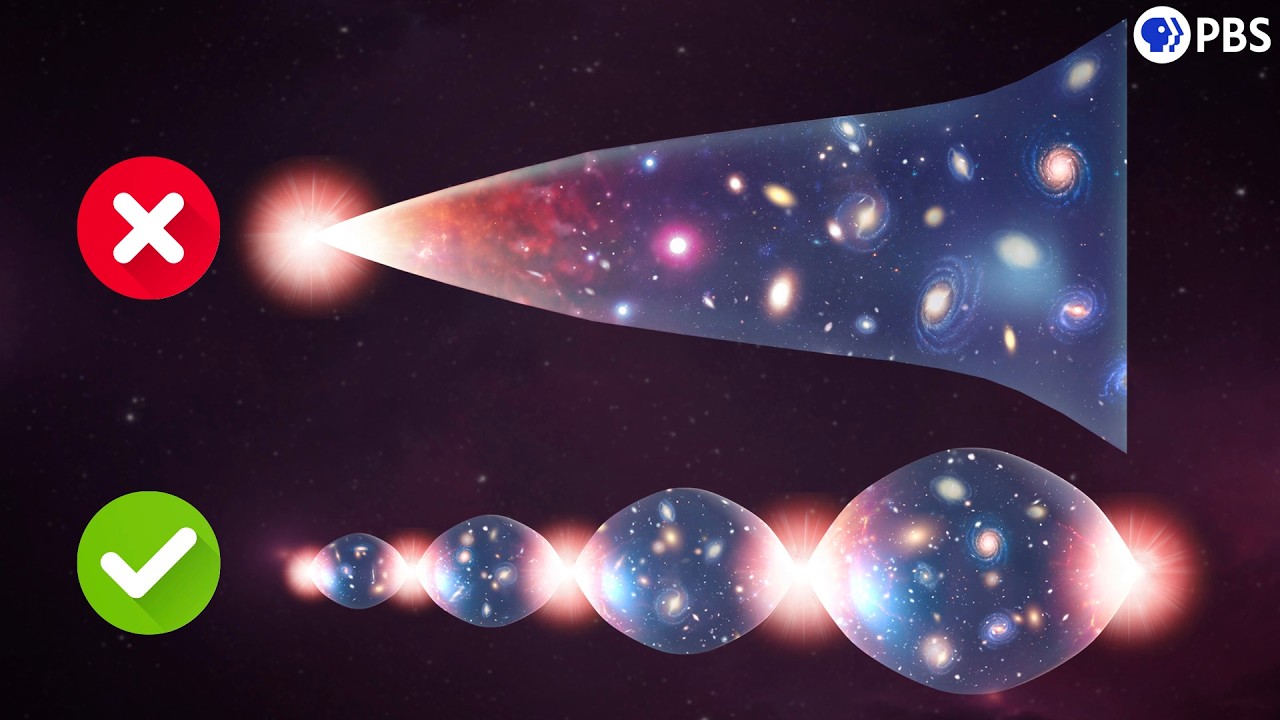The video explores the concept of cyclic cosmology as a potential alternative to the traditional Big Bang model, suggesting that the universe may undergo endless cycles of contraction and expansion without a singular beginning. It highlights the ekpyrotic universe model, which proposes a framework for this cyclic behavior, and discusses its implications for understanding the universe’s origins and testing against inflationary predictions.
The video begins by celebrating the 10th anniversary of PBS Space Time, reflecting on the journey of exploring complex topics in cosmology, such as black holes and the nature of time. It introduces the philosophical question of how the universe began and suggests that instead of a singular beginning, the universe might undergo endless cycles, a concept that has appeared in various ancient cosmologies. The video sets the stage for discussing cyclic cosmology as a potential solution to the mysteries surrounding the Big Bang and the universe’s origins.
The traditional Big Bang model posits that the universe originated from an infinitesimal point and has been expanding ever since. While this model aligns with many observations, it also presents challenges, such as the horizon problem, flatness problem, and the existence of magnetic monopoles. Cosmic inflation has emerged as a popular solution, proposing an exponential expansion in the early universe that addresses these issues. However, inflation still implies a singular beginning and raises questions about the nature of time and the universe’s ultimate fate.
The video then explores cyclic cosmologies, which suggest that the universe could contract and bounce back into a new Big Bang, repeating this process indefinitely. Early models of cyclic universes faced difficulties, as they still required a starting point and did not resolve the problems that inflation addressed. However, recent developments in cyclic cosmology, particularly the ekpyrotic universe model, offer a framework that could eliminate the need for a beginning while solving the horizon, flatness, and monopole problems.
The ekpyrotic model, proposed by researchers including Paul Steinhardt and Neil Turok, utilizes a scalar field similar to that in inflationary models but modifies it to create a cyclic universe. In this model, the universe undergoes a contraction phase, during which quantum fluctuations are amplified, leading to a smooth and uniform universe. As the universe collapses, it transitions into a new expansion phase, effectively recycling the universe without reaching a singularity. This model suggests that the universe can exist in an infinite cycle, avoiding the issues associated with a singular beginning.
Finally, the video discusses the implications of the ekpyrotic model and its connection to higher-dimensional theories like M-theory. It raises the possibility of testing the predictions of the ekpyrotic model against those of inflation, particularly through the detection of gravitational waves and their signatures in the cosmic microwave background. The video concludes by emphasizing the excitement of potentially uncovering the true nature of the universe’s origins and whether we exist in a singular universe or as part of an infinite temporal chain.
